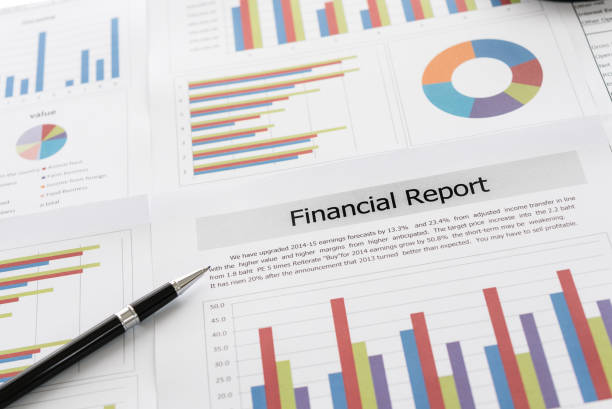 SHARE
SHARE
How to Read Financial Statements for Culinary Entrepreneurs
Briantama Afiq Ashari
In the culinary business, a financial statement is your business “dashboard”: from profit and loss, cash flow, to asset–liability positions.
Without reading well-prepared financial statements, it’s hard to know if your business is profitable, where cost leakages occur, and which strategies are most effective moving forward.
What Is a Financial Statement?
Simply put, a financial statement is an official record summarizing financial performance over a certain period—monthly, quarterly, or annually.
It may include:
- Revenue – money coming in from sales
- Expenses – costs for raw materials, salaries, rent, utilities, etc.
- Profit/Loss – the difference between revenue and expenses
- Assets & Liabilities – what you own and what you owe
- Cash Flow – money coming in and going out.
For F&B players, this report helps monitor profitability and make sound operational decisions.
Read more: What is the importance of SOP for restaurants and how can it be applied?
Why Culinary Entrepreneurs Must Understand Financial Statements
Running a restaurant or café without understanding financial statements is like trying a new recipe without clear measurements. It might turn out great—or it could fail completely.
With structured financial reports, you can:
- Ensure the business is making a profit—not just relying on a “feeling” of being busy or quiet
- Control operational expenses and food costs—so selling prices remain competitive while margins are protected
- Convince investors or banks when seeking additional capital
- Detect cost leakages or fraud early, before they hurt the business
Type of Financial Statements
The 4 Main Types of Financial Statements You Must Know
1. Profit and Loss Statement
Shows how much revenue you generated, how much was spent, and the remaining net profit.
Example: This month’s sales: Rp100 million, raw material costs: Rp35 million, salaries: Rp25 million → the rest is profit.
2. Balance Sheet
A snapshot of assets, liabilities, and equity—showing how “strong” your business is if sales decline.
3. Cash Flow Statement
Reveals whether cash inflow from sales is sufficient to cover daily operations. Many businesses show a profit on the P&L but fail to pay bills due to negative cash flow.
4. Statement of Changes in Equity
Records increases and decreases in equity—initial capital, additional investments, or profit withdrawals by owners.
Read more: Understanding Scale Up: The Key to Business Growth, Here's the Strategy!
Simple Financial Report Examples for Culinary Businesses
Source: istockphoto
Sekarang, agar semakin kebayang, yuk kita lihat contoh laporan keuangan yang umum dipakai pelaku bisnis:
1. Home-Scale Business
If you’ve just started a home-based culinary venture—selling cookies, boxed meals, or trendy drinks—your financial report doesn’t need to be complicated.
Just record three main things:
- Income – money received from each order. Example: 20 boxed meals @ Rp25,000 = Rp500,000
- Expenses – costs for ingredients (rice, chicken, spices), delivery, or packaging. Example: Ingredients: Rp200,000, packaging: Rp50,000
- Cash Balance – money remaining after all expenses. Example: Rp500,000 income – Rp250,000 expenses = Rp250,000
This simple model suits beginners as it directly shows net profit without many extra components.
2. Growing Culinary Business
Once your business grows—say you have a food court booth or a small restaurant with several employees—your financial reporting should be more detailed:
1. Detailed Food Cost (COGS)
Not just total ingredients but per menu/recipe breakdown
2. Employee Salaries
All labor costs including base salary, meal allowance, benefits, overtime
3. Equipment Depreciation
Reduction in value of kitchen equipment over time, to prepare for replacements
4. Online Platform Revenue
Net income after commission and promo deductions
How to Read a Financial Statement
Nah, sekarang bagian paling penting, yaitu bagaimana cara baca laporan keuangan.
Gak susah kok, asal kamu tahu poin-poin utama yang harus diperhatikan. Langkah-langkahnya adalah:
1. Start with the Profit and Loss Statement
Check total revenue. Subtract COGS (raw materials) and operating expenses. If the result is positive, your business is profitable.
2. Review the Balance Sheet
Ensure assets > liabilities. If liabilities are greater, watch out for cash flow pressure.
3. Analyze Cash Flow
Ensure cash inflow covers all routine expenses. If not, adjust sales strategy or cut costs.
4. Use Financial Ratios
Check gross margin, current ratio, and debt-to-equity to gauge overall financial health.
Pay Attention to Food Cost — The Heartbeat of a Restaurant
Food cost is the percentage of ingredient costs to menu selling price.
Too high → thin profit margins, risk of loss
Too low → possible drop in ingredient quality or overly high prices.
Ideal Ranges:
Casual dining: 28–35%
Fast food: 25–30%
Fine dining: 30–40%
Formuka:
Food Cost (%) = (Total Ingredient Cost ÷ Total Sales) × 100%
Example: Ingredients Rp30 million, sales Rp100 million → Food Cost = 30% (ideal for casual dining)
Read more: Don't Make the Wrong Choice! Here are Tips for Choosing Safe Online Loans with Guaranteed Approval
Learning from Large Companies & Maintaining Accurate Culinary Financial Reports
Source: istockphoto
While small-scale F&B businesses aren’t required to prepare formal reports like public companies, you can learn from the pros.
The term “IDX financial statements” refers to reports published by publicly listed companies on the official Indonesia Stock Exchange (IDX) website.
There, you can see how big companies structure their reports, present data neatly, and ensure transparency.
You can adapt such formats to your culinary business—scaled to your needs.
Culinary Financial Reports Have Unique Features
Culinary industry reports often include:
Food cost per menu
Delivery fees
Discounts/promotions from online platforms
Kitchen equipment depreciation.
So don’t compare your restaurant’s report to an electronics store or workshop. Focus on metrics relevant to culinary operations.
Conclusion
Running a culinary business without clear financial statements is like sailing without a compass—you might keep moving but without clear direction, and risk getting lost.
With integrated financial recording systems, you can track revenue, control costs, prevent fraud, and make confident business decisions.
Technology like ESB POSLite or ESB POS ensures all records—sales, inventory, and monthly reports—are automatic, organized, and interconnected.
Saatnya menjaga arus kas tetap sehat dan memastikan bisnismu bertumbuh. Contact the ESB Team today and discover the best financial reporting solutions for your restaurant!
 SHARE
SHARE




